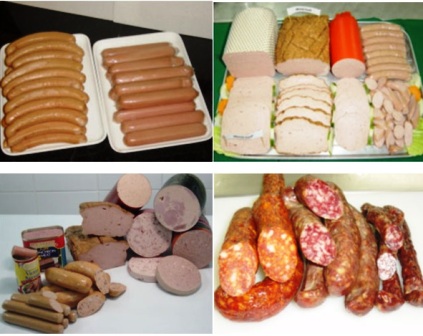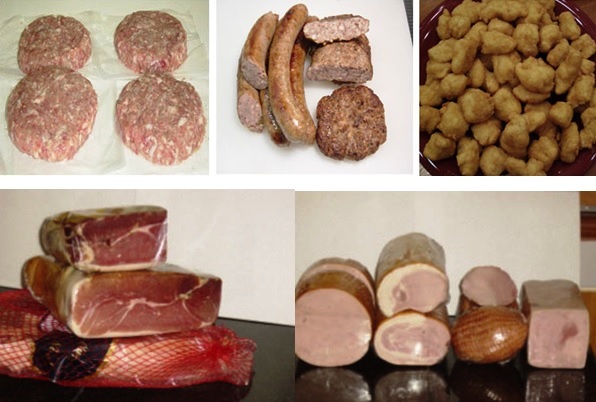Processed meats and their associated health risks |27 July 2018
Every year, about 34,000 cancer deaths worldwide are attributable to diets high in processed meat (Global Burden of Disease Project).
Among Seychellois, the consumption of processed meat is relatively high as is evident from the rate of obesity and cancer. As these products are cheaper, convenient, ready to eat and easy to prepare, people usually end up buying and consuming them in large amounts, without realising the harm to their health.
In light of this, and in an attempt to further educate the public, the Nutrition Unit at the Ministry of Health enlightens us further on this topic.
The World Health Organisation (WHO) defines processed meat as: "any meat that has been transformed through salting, curing, fermentation, smoking, or other processes to enhance flavour or improve preservation”. Examples include bacon, ham, salami, sausages, hot dogs, corned meat, luncheon meats, black pudding, liver pate and canned meat.
Most processed meats contain beef or pork, which also contain other mammalian meats and/or poultry, offal (entrails and/or animal internal organs), or meat by-products, e.g. blood, fats.
Processed meats have been classified as carcinogenic (have potential to cause cancer) by the International Agency for Research on Cancer (IARC). According to a report published by the WHO cancer agency, regular consumption of these products particularly increases the risk of colorectal cancer.
Although the risk is small, this is important information for public health because many people worldwide eat meat, and meat consumption is increasing in low- and middle-income countries.
There are a number of different types of processed meats, and below are some that are commonly consumed in Seychelles, as well as their ingredients and preparation methods.
Fresh processed meat products
These are salted meat mixes composed of muscle meat with varying quantities of animal fat (mostly pork fat or fat from other animals) and some non-meat ingredients. All ingredients are added fresh (raw) and are cooked or fried prior to consumption to make the products palatable. Examples include sausages, patties (burgers) and chicken nuggets (these are already fried once before packaging).

Cured meat cuts
Entire pieces of muscle meat and reconstituted products which can be sub-divided into two groups: cured-raw meats which are raw and cured-cooked meats which undergo mild heat treatment. For both groups, meat pieces are treated with small amounts of nitrite, either as dry salt or as salt solution in water. These kinds of meat cause higher risk of food poisoning as the meat is not thoroughly cooked.
Raw-cooked meat products
These are made of muscle meat, fat and non-meat ingredients which are processed raw. The resulting viscous batter is portioned in sausages and thereafter submitted to heat treatment.
The main ingredients are:
- Lean meat is the principle raw material for classical raw-cooked meat products. The lean meat comprises mainly chilled beef and/or pork, but also poultry meat (turkey, chicken).
- Fat, mainly chilled pork fat, but also chicken, beef or lamb fat or vegetable oil is used. Back, belly and jowl fat (pork), skin (poultry) are mostly used in these products.
- Pork skin is an economic source of protein (nutritionally inferior to muscle protein) and may be used for lower quality and lower cost raw-cooked products.
Raw-cooked products undergo specific heat treatments as the final processing step. The most complex heat treatment is applied to sausages: after filling in casings, a combination of heat treatments, usually carried out in three steps (reddening, smoking, or cooking) is applied.
Raw-cooked meat products are mostly manufactured and marketed as sausages, but are also available as meat loaves, meat balls or as canned products.

Pre-cooked meat products
These include luncheon meat, corned beef, ham and sausages. There are two heat treatment procedures involved: the first is the pre-cooking of raw meat materials and the second is the cooking of the finished product mix at the end of the processing stage.
The main ingredients are:
- Mixes of lower-grade muscle trimmings, fatty tissues, head meat, animal feet, animal skin, blood, liver and other edible slaughter by-products. These raw materials (skin, trimmings, heads, feet) often have relatively high bacterial loads as they are more exposed to contamination during slaughtering and meat handling than muscle meat.
- Blood sausages contain mixtures of raw un-coagulated blood and other food ingredients (meat, fats, non-meat ingredients) filled into casings with subsequent heat treatment.
- The raw material for corned beef is lean beef of lower grades, usually from cows. Connective and fatty tissue is separated from the precooked beef. The remaining lean pre-cooked meat is mixed with spices and curing salt and coarsely minced. This mix is filled into the typically shaped corned beef cans.
Pre-cooking facilitates removal of soft animal tissues (muscle meat, fat, connective tissue) from bones of heads, feet etc. and makes tissues such as skin softer and better to handle for the processing steps to follow. Pre-cooking also substantially reduces the bacterial content of the raw materials and is crucial for the shelf life of these products.

Raw-fermented sausages
Raw-fermented sausages are products which are not subjected to any heat treatment and are in most cases, distributed and consumed raw. The processing of raw-fermented sausages is dominated by biological and biochemical processes. All meat used is chilled for some time to reach its lowest ph-values.
The main ingredients are:
- Uncooked meat products consisting of coarse mixtures of lean meats, fatty tissues, salts, nitrite (curing agent), sugars, spices and other non-meat ingredients filled into casings which go through fermentation processes.
- Lean meat from a variety of animal sources such as cattle, pigs, horses, donkeys, camels, sheep or goats can be used. The lean meat can be from older adult animals, as water content and water holding capacity of such meat is lower, supporting the necessary drying processes during fermentation and ripening.
- In most products, fresh chilled pork back fat is used as it is firm and dry and remains stable without pronounced rancidity, even after prolonged ripening periods.
Patties, kebabs
Patties (burgers) are formed from minced meat. Other animal tissues, e.g. fats (pork fats, chicken skin) or connective tissue/tendons can also be part of the mixture. Other non-meat ingredients suitable for this purpose could include rusk, breadcrumbs and dried flakes from roots and tubers.
Liver sausage / liver pate products
These may be composed of pre-cooked lean meat trimmings, softer or firmer fatty tissues preferably from pigs (body fats such as jowls, belly fat or back fat; internal fats such as kidney fat or intestinal fat) and for low cost products, other soft animal tissues, e.g. hearts, lungs, spleen, tripes. A fair amount of liver is also added which contributes to its unique flavour and taste.
Chicken sausages
These contain meat mixes including chicken meat which is often used to partly substitute the more expensive red meats in meat products especially of the raw-cooked type such as luncheon meat, bologna or hotdogs. The main ingredients are chicken off-cuts such as intestines, heart, gut and skin.
Red meat
Scientists have also classified red meat (all mammalian muscle meat, e.g. beef, pork, lamb, goat) as "probably carcinogenic". There is also evidence of links with pancreatic and prostate cancers. The Global Burden of Disease Project has estimated that diets high in red meat could be responsible for 50,000 cancer deaths per year worldwide.
Processed meat will have some chemicals added to it during processing which may be harmful; some of these chemicals are known or suspected carcinogens, but it is not yet fully understood how cancer risk is increased by red meat or processed meat.
Many national health recommendations advise people to limit intake of processed meat and red meat, which are also linked to increased risks of death from heart disease, diabetes, and other illnesses.
References: WHO; IARC; FAO
Photo sources: FAO




